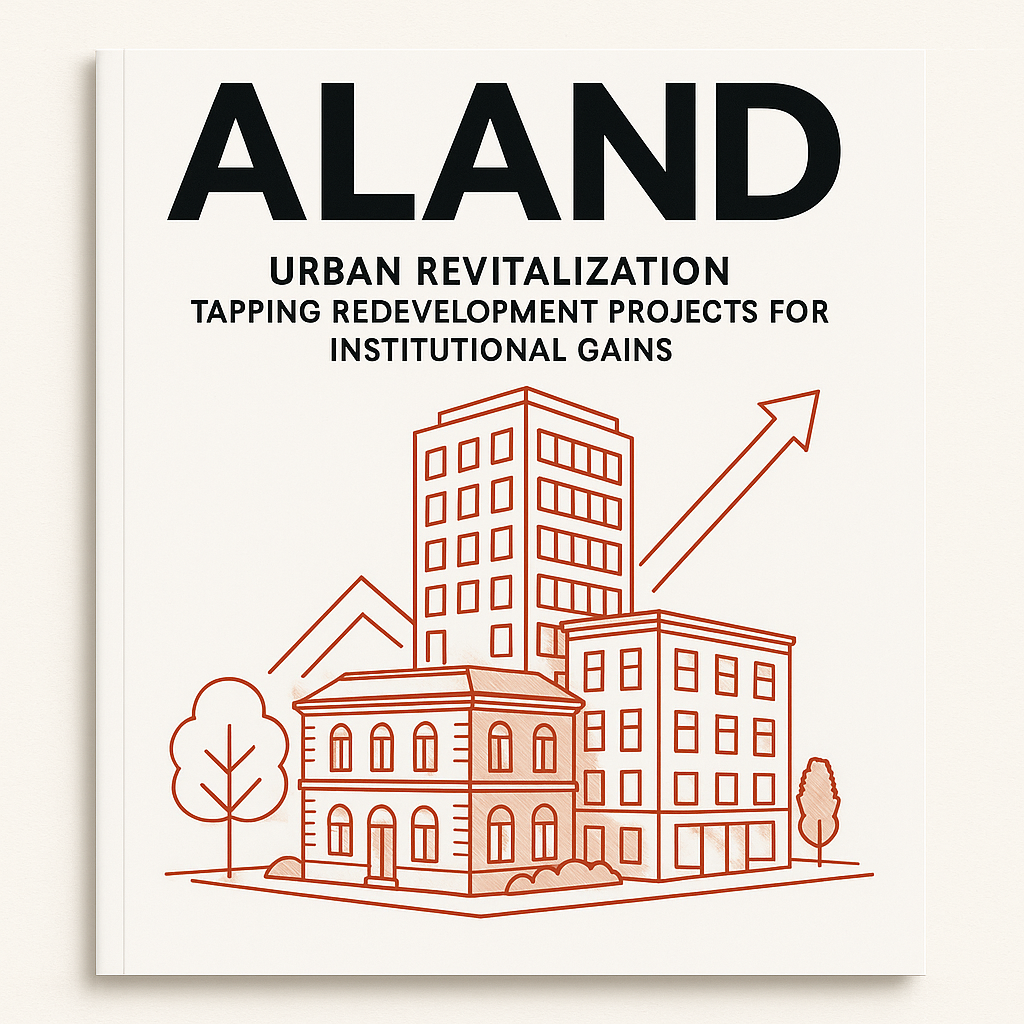Urban Revitalization: Tapping Redevelopment Projects for Institutional Gains
- Published Date: 29th Apr, 2025
-
5★ ★ ★ ★ ★(165)

Urban revitalization has emerged as a critical growth strategy for institutional investors, offering significant returns while fostering social, economic, and environmental benefits. Tapping into redevelopment projects allows large-scale investors to position themselves within a market segment that thrives on regeneration, community investment, and value appreciation. From my perspective as a Swiss Economist and founder of the ALand Platform, I’ve witnessed how these opportunities are transforming cities and opening new investment avenues that prioritize long-term sustainability over short-term gains.
Strategic Insights: Redevelopment as an Institutional Investment
Investors with institutional clout—those who are focused on large, high-value projects—are uniquely suited to engage in urban revitalization efforts. These projects are often complex, involving mixed-use developments that combine residential, commercial, and recreational spaces in previously underdeveloped or overlooked areas. Redevelopment provides the opportunity to repurpose land, restore historical structures, and create vibrant spaces that meet the demands of modern urban life.
The economic rationale behind urban revitalization is simple: as cities grow and evolve, there’s a constant need for infrastructure upgrades. By investing in redevelopment projects, institutional investors can capitalize on the upward trajectory of urban growth, benefiting from long-term appreciation and the ability to shape emerging neighborhoods.
Redevelopment also presents a unique opportunity to integrate sustainability into the heart of a city’s fabric. Projects that incorporate green building practices, energy-efficient technologies, and social responsibility not only meet growing demand for eco-conscious developments but also attract institutional investors seeking to enhance their portfolios with socially responsible assets.
Cause-Related Marketing: An Essential Tool for Branding and Growth
One of the most significant shifts in real estate marketing is the growing importance of cause-related campaigns. As urban revitalization efforts often involve reinvigorating underserved communities, developers are increasingly using cause-related marketing to build their brand and increase consumer trust. This strategy, rooted in social responsibility, enhances a brand’s image and fosters loyalty among both consumers and investors.
From a branding standpoint, the alignment of a development project with social good boosts credibility. For investors, this adds a layer of security, knowing that the projects they’re backing are not just financially viable but also positively impacting the community. Cause-related marketing also helps in distinguishing one project from another, especially in highly competitive markets, offering investors an additional layer of differentiation that speaks to their values as much as their financial goals.
The Role of Digital Tools in Driving Investor Confidence
Modern tools are pivotal in tapping into the potential of urban redevelopment. The ALand Platform offers a suite of solutions that allows developers to strategically position their projects to attract institutional investors, leveraging AI and data analytics to predict trends and market shifts. By using these tools, developers can better understand what institutional investors are looking for and tailor their proposals accordingly, ensuring that their projects align with the economic, environmental, and social expectations of their target market.
In addition to traditional real estate investments, the digital economy presents new avenues such as tokenization of real estate assets. EE Gold and similar cryptocurrency platforms are reshaping the investment landscape by enabling fractional ownership of high-value properties. Through tokenization, developers can open up urban revitalization projects to a broader audience, offering a more liquid and diversified method of funding.
Practical Takeaways for Institutional Investors
-
Strategic Alignment: Prioritize investments that not only offer financial return but also enhance urban ecosystems, adding value to the community and meeting future urban demands.
-
Leverage Data: Use advanced analytics to predict redevelopment opportunities that align with macroeconomic trends, demographic shifts, and social needs.
-
Social Responsibility Integration: Embed sustainability and social responsibility into your projects to enhance brand image and attract like-minded investors and consumers.
-
Explore Tokenization: Use blockchain-based platforms to increase investment accessibility and liquidity, broadening the pool of institutional and individual investors.
For further exploration of urban revitalization, sustainable investments, and digital solutions, explore ALand's Blog, ALand Platform, and EE Gold.

